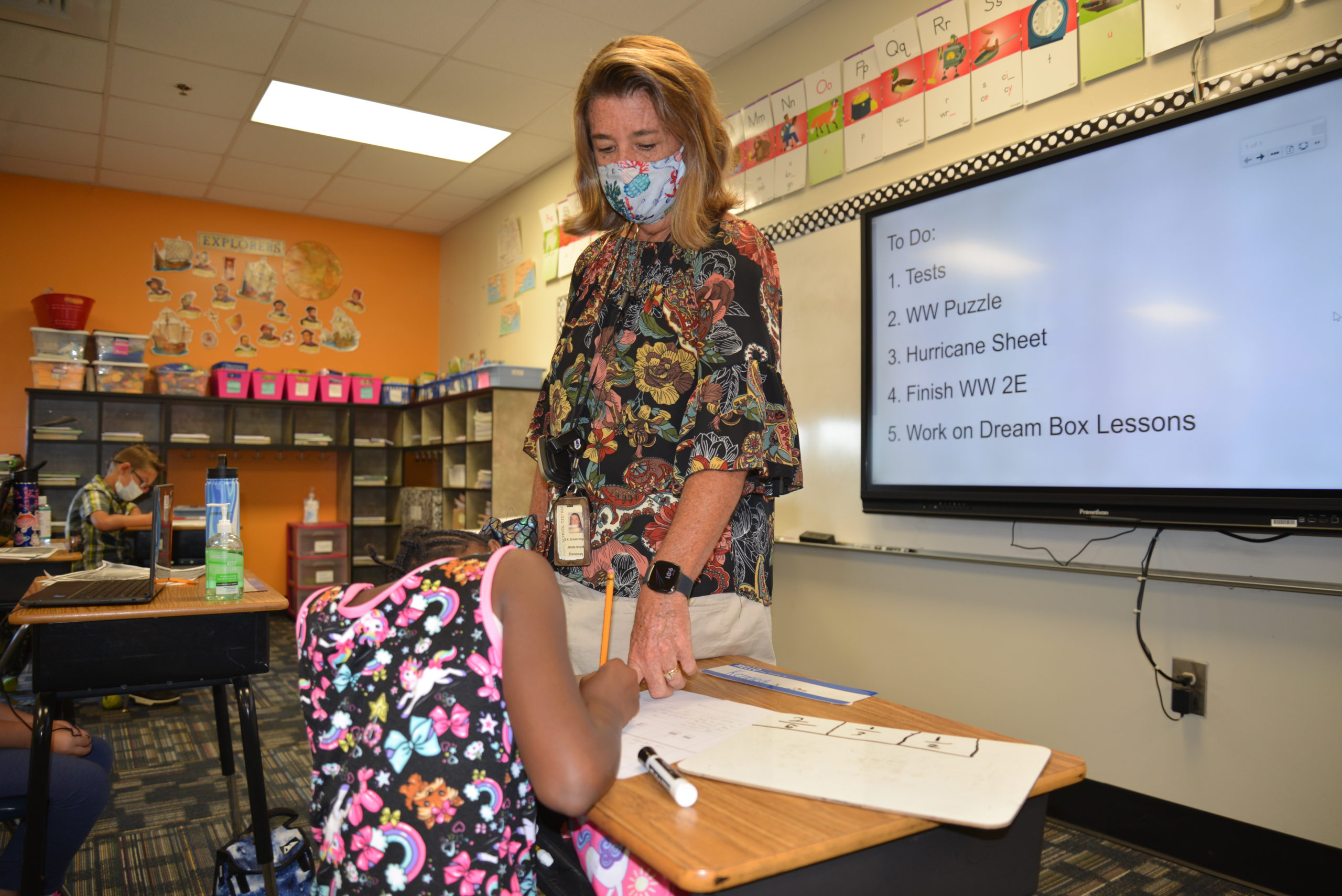Create distinct classroom zones to address learning challenges
At Demco, our mission is to help educators maximize the potential of their learning environments. Our approach to creating effective, engaging spaces includes thoughtful planning from our expert team of interior designers. With a focus on educational spaces, our team leverages years of experience designing classrooms, libraries, common areas, and more to integrate educational pedagogy and innovate solutions.
One effective method we use when designing learning environments is zoning. By creating distinct zones within a classroom, educators can address the unique needs of students throughout different parts of their day. Here are some examples of zones that can be incorporated in your school’s classrooms, and the impact they can have on students’ learning.
Learning Core
The Learning Core zone is the heart of the classroom, featuring the seating and work surfaces students use when receiving large group instruction. While it may seem like a traditional classroom, the Learning Core zone can be made agile and adaptable by including flexible furniture. Unique desk shapes with casters make it easy to rearrange desks into groups or rows throughout the day, supporting dynamic teaching and learning styles. A variety of seating options like mobile chairs or wobble stools offer students choice, and they support both focus-boosting comfort and healthy ergonomics.
Peer-to-Peer
The Peer-to-Peer zone supports collaborative small group learning. By providing options like sit to stand desks and flexible seating, students feel they have a voice and can choose the option that’s most comfortable and suited to their learning style. According to the Cornell University Center for Teaching Innovation, collaborative learning offers many benefits to students, including the development of higher-level thinking, communication, self-management, and leadership skills.

Connection
The Connection zone provides students a place for digital collaboration and technology enrichment, along with community and conversation. Whether students are working on a group project or engaging with a multimedia lesson, having tech-enabled zones in the classroom gives students the resources they need in a localized spot.
Support and Resource
The Support and Resource zone helps empower educators, support their effectiveness, and promote job satisfaction. With concerns about teacher retention on administrators’ minds, providing ergonomic solutions to support educator mental health and well-being are crucial. Giving teachers options and input when it comes to teaching and storage solutions can also have a major impact on retention.
Student Choice
The Student Choice zone gives students another casual option for small group breakout activities. By introducing soft seating elements that combine mental calm and physical comfort, it becomes a valuable resource for students. According to Western Governors University, peer learning is an exciting and enriching way to encourage social interaction. Students who may be hesitant to interact with teachers may be more willing to open up to their peers in an environment that feels more relaxed or approachable.
Happiness
The Happiness zone provides another comfortable seating area designed to bring students joy. This area can provide options for floor-based learning, shelving for showcasing student work, and acoustical barriers for noise control. With concerns about student mental health on the rise, a renewed emphasis has been placed on social-emotional learning. Having areas in the classroom where students can decompress and emotionally self-regulate helps improve mood, relieve stress, and boost motivation.
Reflection
The Reflection zone helps create a pocket of quiet in what can sometimes be a chaotic place. By creating personal space for feelings of comfort and safety, you can create an oasis of calm for students to recharge, find peace, and refocus their attention. Research from Monash University shows that a ‘calm school’ can increase focus and productivity in classroom tasks, as well as create an opportunity to engage deeply with classroom activities, resulting in a better learning experience and improved outcomes.
by Amber Benesch and Stephen Gower
Ready to create learning zones in your school? Visit Demco’s website to learn more.






